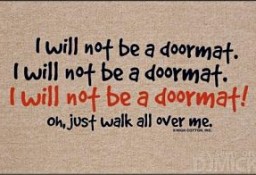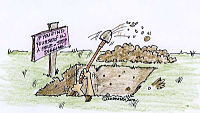I am working this year with several clients who describe their work life as a prison sentence: five days in the big house with weekend parole (ankle monitor attached!)
About 95% of offenders are eventually released from prisons to be integrated back into civil society. Many spend the last year or two of their sentence in houses on a street near you. These residences are known as ‘halfway houses’ because they represent a re-entry point between incarceration and freedom.
A halfway house offers transition programs to help offenders ‘let go’ of their prison identity through counselling. They get job training and work and pay rent as they develop a ‘new’ identity and learn to function in the ‘real’ world.
Career change is a similar process for many individuals who spend years imprisoned in a particular job role that defines who and what they are. Getting out of that prison also involves a letting go of one identity and developing a new one, not an easy task for most people.
Recidivisim
Recidivism rates for halfway house occupants is 60%+ in many jurisdictions because convicts reoffend within 3 years of their release date and land back in prison. Successful integration back into society depends on a number of critical factors, including the motivation of offenders to change their lives and the quality of programs that support them to do so.
My research indicates that the same factors are often at work in successful career change. Individuals find that living in that “halfway” point of transition is very uncomfortable. It causes them to re-evaluate their past, think about their future, adjust their ideas and beliefs—a lot of inner work to find their motivation to make real change in their lives.
And, of course, they don’t live in a vaccum. Whether in prison or out, we have structure all around us–constraints, rules, limitations but also freedom, choices and new opportunities. Embracing freedom is not easy because it often requires new skills to navigate through an obstacle course of options.
Letting go of career pain
The biggest issue that I see for career changers is letting go of the past. If their previous work/life experiences were difficult or painful then it is a challenge to face their fears of the future. They might know rationally that the past is over and does not determine the future, but they don’t believe their future will be any different really because work for them has always been a disappointing or painful experience. So, in effect, what they believe is that the past is the best indicator of the future.
But all our thinking about the past doesn’t change the future. We have to change the channel on our experience.
We must focus on the present in order to create a better future—that is the purpose of the “halfway” transition. It is to accept reality for what it is, you can’t change the past, so focus on finding some hope in the present—life can be better! This fact can bring a new burst of creative energy and help us find some pleasure or joy in current experiences.
If you thought that the key to success was to have the right attitude, faith, or courage, then you will be disappointed when things don’t work out. I’m not saying that ideas, beliefs and attitudes aren’t important but nobody ever lost weight just by thinking so. If we don’t find more pleasure in our lower weight than we did in having too much weight, then we will lose the motivation to keep off the weight and start our emotional eating once again. That’s why losing weight usually requires a change in lifestyle—a more enjoyable one!—in order to keep off the weight.
Why do so many offenders go back to prison? It’s the same reason that so many people stay in a job they hate or, worse yet, go back to a similar situation—they ignore reality as it is. Instead, they have a better chance of making a successful transition if they look at their current reality with a clear eye, open mind, and truthful awareness.
For some offenders, changing their lifestyle or habits is so painful, they prefer to go back to jail, to a known future with a roof over the heads and three squares a day.
Freedom through action
But, the reality is that jail hurts too, it has its own kind of pain. They choose the pain of incarceration over the joy of freedom because their experience of ‘freedom’ was very negative (in truth, they never really experienced freedom but only some cheap imitation of it).
Freedom is not easily acquired. You don’t achieve it with mind tricks that are designed to hide reality by imposing a positive spin on it. It’s about looking at what you really want, where you really want to be, the kind of life you really want, and taking actions now that move you closer to that goal.
That takes work, effort, persistence, to get what you want. For some people, it’s just easier to let the institution provide them with a roof over their heads and three square a day. But that’s a lifestyle, not a life; that’s prison, not freedom.











